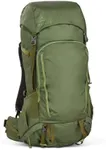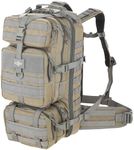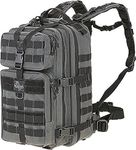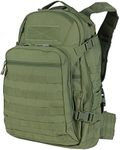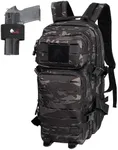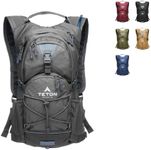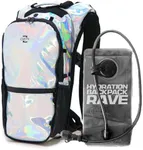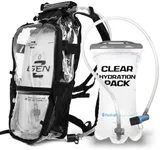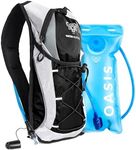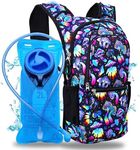Buying Guide for the Best Survival Backpacks
Choosing the right survival backpack is crucial for ensuring you have everything you need in an emergency or outdoor adventure. The right backpack will be durable, comfortable, and have enough space to carry all your essential gear. When selecting a survival backpack, consider the following key specifications to make sure it meets your needs and preferences.CapacityCapacity refers to the volume of the backpack, usually measured in liters. This is important because it determines how much gear you can carry. Backpacks with a capacity of 20-40 liters are suitable for short trips or day hikes, while 40-60 liters are better for weekend trips. For extended adventures or if you need to carry a lot of gear, look for backpacks with a capacity of 60 liters or more. Choose a capacity based on the duration of your trips and the amount of gear you need to bring.
MaterialThe material of the backpack affects its durability and weight. Common materials include nylon, polyester, and canvas. Nylon and polyester are lightweight and water-resistant, making them good choices for most users. Canvas is heavier but extremely durable. If you expect to be in wet conditions, look for backpacks with waterproof coatings or consider getting a rain cover. Choose a material based on the environment you'll be in and how much weight you're willing to carry.
Comfort and FitComfort and fit are crucial for long-term wear. Look for backpacks with padded shoulder straps, a padded back panel, and a hip belt to distribute weight evenly. Adjustable straps are important to ensure a snug fit. Some backpacks also offer adjustable torso lengths. Try on different backpacks to see which one feels most comfortable, especially if you plan to carry heavy loads or wear it for extended periods.
Compartments and OrganizationCompartments and organization features help you keep your gear accessible and organized. Look for backpacks with multiple compartments, including a main compartment, side pockets, and smaller pockets for essentials. Some backpacks also have specialized compartments for hydration systems, sleeping bags, or tools. Choose a backpack with the right combination of compartments based on the type of gear you need to carry and how you prefer to organize it.
WeightThe weight of the backpack itself is important, especially if you need to carry it for long distances. Lighter backpacks are easier to carry but may sacrifice some durability or features. Heavier backpacks are often more durable and have more features but can be more tiring to carry. Consider the trade-off between weight and features, and choose a backpack that balances both according to your needs.
DurabilityDurability is essential for a survival backpack, as it needs to withstand harsh conditions and heavy use. Look for backpacks with reinforced stitching, durable zippers, and strong materials. Some backpacks also have reinforced bottoms or extra padding in high-wear areas. Choose a backpack that can handle the type of environment you'll be in and the amount of use it will get.
AccessibilityAccessibility refers to how easily you can reach your gear. Look for backpacks with multiple access points, such as top-loading, front-loading, or side-loading designs. Some backpacks also have quick-access pockets for items you need to grab quickly. Choose a backpack with an accessibility design that matches how you like to pack and access your gear.


